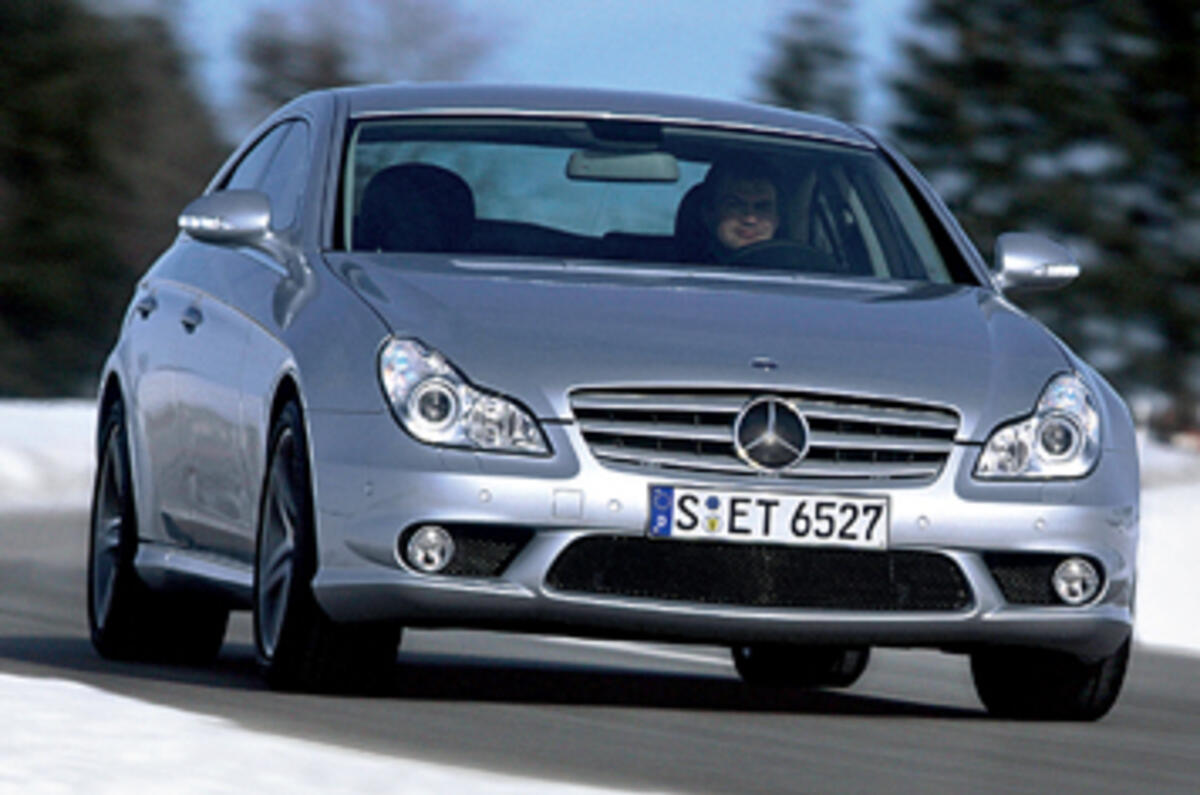What's new?
There is not much to report visually. Changes over the CLS 55 extend to new badges along the flanks and boot lid, reworked bumpers, new wheels and interior tweaks, including terrific new instrument graphics. Two years after launch, it still looks great – with an added touch of aggressiveness brought by a 10mm suspension drop.
The single biggest change – the one that completely transforms the CLS 63’s character from that of the outgoing CLS 55 – is its V8. The naturally aspirated unit has been developed from scratch. With 506bhp, it produces a scant 13bhp more than the supercharged 5.4-litre V8 it replaces.
More significantly, the power peak is now developed 700rpm higher up the range than before, at 6800rpm. And with 465lb ft, the CLS 63 gives away a considerable 51lb ft to the CLS 55.What’s more, it isn’t reached until 5200rpm, some 2550rpm further up the dial.
What's it like?
The word ‘peaky’ comes to mind with those changes. But in reality the new engine is hugely flexible. It lacks the sudden explosiveness of the CLS55, especially at the lower end. The reward, however, is a far more linear delivery. It’s noticeably smoother and throttle response has improved markedly.
I was always a big fan of the CLS 55’s thumping nature, but there’s something about the CLS 63’s ability to rev higher that ultimately makes it more satisfying.
In straight line terms there’s not much between them, the CLS 63 pipping the CLS 55 from 0-62mph with a claimed 4.5sec versus 4.7sec: the 500bhp 5.0-litre V10 powered BMW M5 now has a much more focused rival to face up to.
One upside of the CLS 63’s lower torque rating (and surely the reason why it’s able to outrun its predecessor) is that it receives Mercedes-Benz’s excellent 7G-Tronic seven-speed automatic rather than the CLS 55’s older five-speed ‘box. No conventional torque converter-equipped automatic operates with such apparent efficiency on a wide open throttle.
Try it and you can see why AMG insists its loyal customers don’t ask for anything else. It offers three modes – comfort, sport and manual, the latter of which sees it hold on to each gear, refusing to change up even at maximum revs.
The modifications to the chassis are rather less dramatic than those concentrated under the bonnet. The steering, for a start, is spot on. There’s none of the lightness and vague off-centre feel that affects other Mercedes. Instead, you get a meaty action and a lovely linear action in the first quarter turn of lock.
On the optional 19-inch wheels and 255/35 (front) and 285/30 rubber worn by our car there is massive purchase, the kind that allows you to take big liberties. A spot of tail-out action is there for the taking with the ESP disengaged. The CLS 63’s rear-wheel drive chassis more than meets the demands placed on it by its mighty new engine.
Despite the low profile rubber, the ride quality is purposely firm but never crashy. Granted, we’ve only driven it on smooth German roads, but the ability of the CLS 63’s air suspension to soak up ruts and ridges is something that marks it out as one of the world’s most accomplished performance saloons – expect that Mercedes would rather that we refer to it as a coupe, of course.









Add your comment